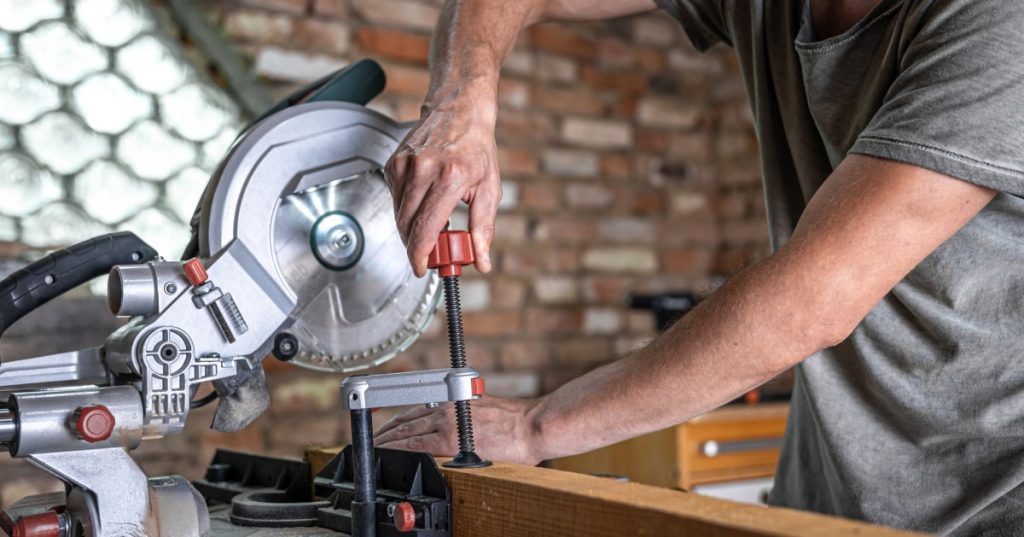Your presence here shows that you want to know that Can a Track Saw Replace a Miter Saw?
Well!
You’re on right place because we already have worked for you. Woodworking and DIY enthusiasts often find themselves contemplating which tools to add to their workshop.
Two popular choices for making precise cuts in wood are the track saw and the miter saw.
While both serve essential roles in woodworking, some individuals wonder whether a track saw can replace a miter saw.
In this article, we will delve into the capabilities, advantages, and limitations of these tools to help you make an informed decision.
Understanding the Track Saw
A track saw, also known as a plunge-cut saw, is a versatile cutting tool designed for straight and precise cuts in various materials, including wood, plywood, and even aluminum.
Unlike traditional circular saws, a track saw features a circular blade that is attached to a guided track. This track ensures that the saw follows a straight and accurate cutting path.
Advantages of a Track Saw
- Precision Cutting: Track saws excel at making precise and straight cuts. The guided track eliminates the need for manual alignment, reducing the chances of errors.
- Portability: Track saws are relatively lightweight and easy to transport, making them suitable for on-site jobs or moving between different workstations.
- Versatility: Besides straight cuts, track saws can perform plunge cuts and bevel cuts, making them suitable for a wide range of applications.
- Clean Cuts: The combination of a sharp blade and the guided track results in cleaner and splinter-free cuts, reducing the need for additional finishing work.
- Space Efficiency: Track saws require less workshop space than miter saws, making them a good choice for compact workspaces.
Understanding the Miter Saw
A miter saw, also known as a chop saw or drop saw, is a specialized tool designed primarily for making accurate crosscuts, miter cuts, and bevel cuts.
It features a circular saw blade mounted on a pivoting arm that can be adjusted to various angles for making precise cuts.
Advantages of a Miter Saw
- Angle Adjustments: Miter saws are perfect for making angled cuts, such as miter cuts and bevel cuts, commonly used in carpentry and woodworking projects.
- Speed: Miter saws are known for their speed and efficiency when making repetitive cuts, making them ideal for tasks like framing or trim work.
- Stability: Miter saws are generally more stable than handheld tools, ensuring consistent and accurate cuts.
- Crosscut Capacity: Miter saws can handle wider boards than most track saws, allowing for larger crosscutting tasks.
Can a Track Saw Replace a Miter Saw?
Now that we understand the capabilities of both track saws and miter saws, let’s address the question: Can a track saw replace a miter saw?
- Straight Cuts: Yes, a track saw can replace a miter saw for making straight cuts. In fact, track saws excel at straight cuts and can produce cleaner results, especially on large panels or sheet materials.
- Angle Cuts: While a track saw can make bevel cuts, it may not be as efficient or precise as a miter saw for angled cuts. Miter saws are designed specifically for this purpose and offer more versatility in terms of angle adjustments.
- Portability: Track saws are more portable and suitable for on-site work. If you require a tool that you can easily transport to job sites, a track saw might be a better choice.
- Versatility: Miter saws are highly versatile when it comes to angle cuts and repetitive tasks. However, if you primarily need straight cuts and occasional bevel cuts, a track saw can serve as a versatile alternative.
- Space Efficiency: Track saws take up less space in your workshop, making them ideal for smaller workspaces. If space is a concern, a track saw can be a more practical option.
- Cost: Track saws tend to be more affordable than high-end miter saws, so if budget constraints are a consideration, a track saw may be a cost-effective choice.
- Clean Cuts: Track saws often produce cleaner cuts with minimal tear-out, especially when used with a guide rail. If achieving a polished finish is crucial, a track saw might be preferable.
Conclusion – Can a Track Saw Replace a Miter Saw?
In summary, whether a track saw can replace a miter saw largely depends on your specific woodworking needs and preferences.
Track saws excel at straight cuts, are portable, and take up less space, making them a valuable addition to any workshop. However, miter saws are essential for making precise angle cuts and excel at repetitive tasks, making them indispensable for certain projects.
For many woodworkers and DIY enthusiasts, having both tools in their arsenal is the ideal solution. This allows them to harness the strengths of each tool when needed, ensuring versatility and precision in their woodworking endeavors.
Ultimately, the decision to replace a miter saw with a track saw or vice versa should be based on your specific projects, space constraints, and budget considerations.


